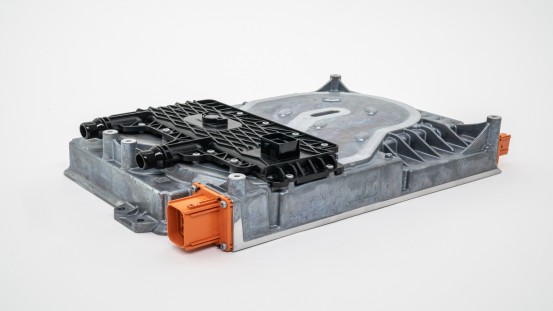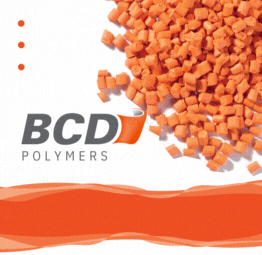Glass fibers made from waste glass
The carbon footprint of the polyamide 6 compounds from LANXESS can be reduced even further by producing them not from conventional glass fibers, but from the resource-conserving Eco glass fibers developed by the company. Industrial glass waste is used in their production, which reduces the consumption of raw materials and energy and avoids waste. “The carbon footprint of our Eco glass fibers is around two-thirds smaller than that of conventional glass fibers,” says Margraf. LANXESS offers the corresponding compounds that are mass-balanced in accordance with ISCC Plus (“International Sustainability and Carbon Certification”) under the brand name Durethan ECO. They contain up to 60 percent by weight of recycled fiber. Mass balancing helps to determine the share of sustainable material in the compound and to indicate it in a transparent manner for processors.
Lightweight design for a reduced carbon footprint
Under the name HiAnt, LANXESS offers a range of services designed to support customers in the transition from polyamide 66 to polyamide 6. These services range from joint concept development for the design of components and material optimization through to cutting-edge methods in computer-aided engineering (CAE) for predicting component properties. “The right choice of material and a weight-optimized component design – for example, making walls less thick where they are subjected to lower loads and optimally positioning reinforcing ribs – can help to tangibly reduce the carbon footprint of a component still further,” says Margraf.
Battery charger: reduced carbon footprint with polyamide 6 instead of polyamide 66
The extent to which the carbon footprint can be reduced is demonstrated by the cover for an on-board battery charger installed in an all-electric compact vehicle made by a German carmaker. It consists of Durethan BKV50H3.0, which is highly reinforced with 50 percent by weight of short glass fibers. According to Margraf: “Compared with a component solution made from a polyamide 66 compound containing the same amount of glass fiber, the carbon footprint can be reduced by 36 percent. The use of a BKV50 type with Eco glass-fiber reinforcement could potentially have reduced the carbon footprint by as much as 46 percent.”
The carbon footprints of the polyamide 6 base resin and glass fibers from LANXESS were certified by an accredited certification body. The comparison with polyamide 66 base resin is based on the emission figures published by PlasticsEurope – the European association of plastics producers – in February 2014 in “Eco-profiles PA66.”



